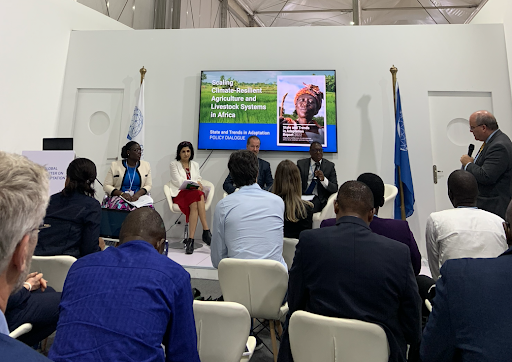Groundwater - North Africa's Blue Gold 1
At the recent 27th Conference of the Parties (COP27) under the UN Framework Convention on Climate Change (UNFCCC), countries convened in pursuit of raising awareness and scaling up actions to address the climate emergency (UNFCCC, 2022). Having had the chance to attend the conference in person, I am using this entry to reflect on my personal experiences and highlight issues within the North African agriculture sector.
COP27 - new hopes for Water and Food?
Being held in Egpyt, one of the aridest regions in Africa, climate adaptation naturally became a core topic at COP27. Water - a key aspect of adaptation - seemed to have benefited from this attention (GWP, 2019). Although the topic is only briefly touched upon in the Koronivia Joint Programme (UNFCCC’s main programme on agriculture) water made it onto the final, overarching outcome, or formally, “the Sharm el-Sheikh Implementation Plan” as an independent agenda item. This is a major milestone from last year’s Glasgow Climate Pact, where water was completely left out. More on a positive note, expert discourses on agricultural adaptation in Africa now seem to greatly recognise and promote small-scale farming and local practices. We have seen their importance previously.
 |
Image 1: Side event by the Global Centre on Adaptation on |
The blue gold of North Africa
Given that COP27 was held in North Africa, it is also a good opportunity to examine the region’s unique irrigation challenges. Although North Africa has the aridest climate of the continent, it is gifted with vast underground ‘fossil’ aquifers, stored with rainfall water that was recharged into sediment layers thousands of years ago (Taylor et al., 2012). However, these storages are non-renewable and are often the only source of perennial water.
A video by the Green Climate Fund on water scarcity in the Saïss Plain
The irrigation challenge
Aggressive agricultural intensification and expansion in recent years have led to groundwater abstractions at alarming rates. In Biskra in Algeria for instance, the size of irrigated areas has increased five-fold since the late 1960s (Afrasinei et al., 2017). At current rates of withdrawal, it is projected that some aquifers may soon reach total depletion (Mazzoni, Heggy and Scabbia, 2018). Groundwater depletion will reduce the agricultural sector’s resilience against climate change, threatening food security and in turn inducing socio-economic instabilities.
The case of Saiss Plain in Morocco has exemplified that the poorest households and smallholders will be hit the hardest (Green Climate Fund, 2017). In 1980, a prolonged drought triggered a widespread transition from rain-fed to groundwater irrigation. Following the declining groundwater table, boreholes had to reach increasingly greater depths. These capital-intensive drilling activities - often led by big agricultural agencies with market-oriented production - are hardly kept up by small-holder farmers. Many were forced to give up their livelihoods eventually.What are the main drivers of unsustainable groundwater irrigation? How can we use it more sustainably? These are some of the questions I will explore in the next post.
What good fortune to have attended COP27 and seen first hand the discussion on water in arid lands. Thanks for your insight here. Despite taking place in Sharm El-Sheikh, water in drylands did not receive much attention in any discussion or announcements of outcomes from COP27.
ReplyDelete